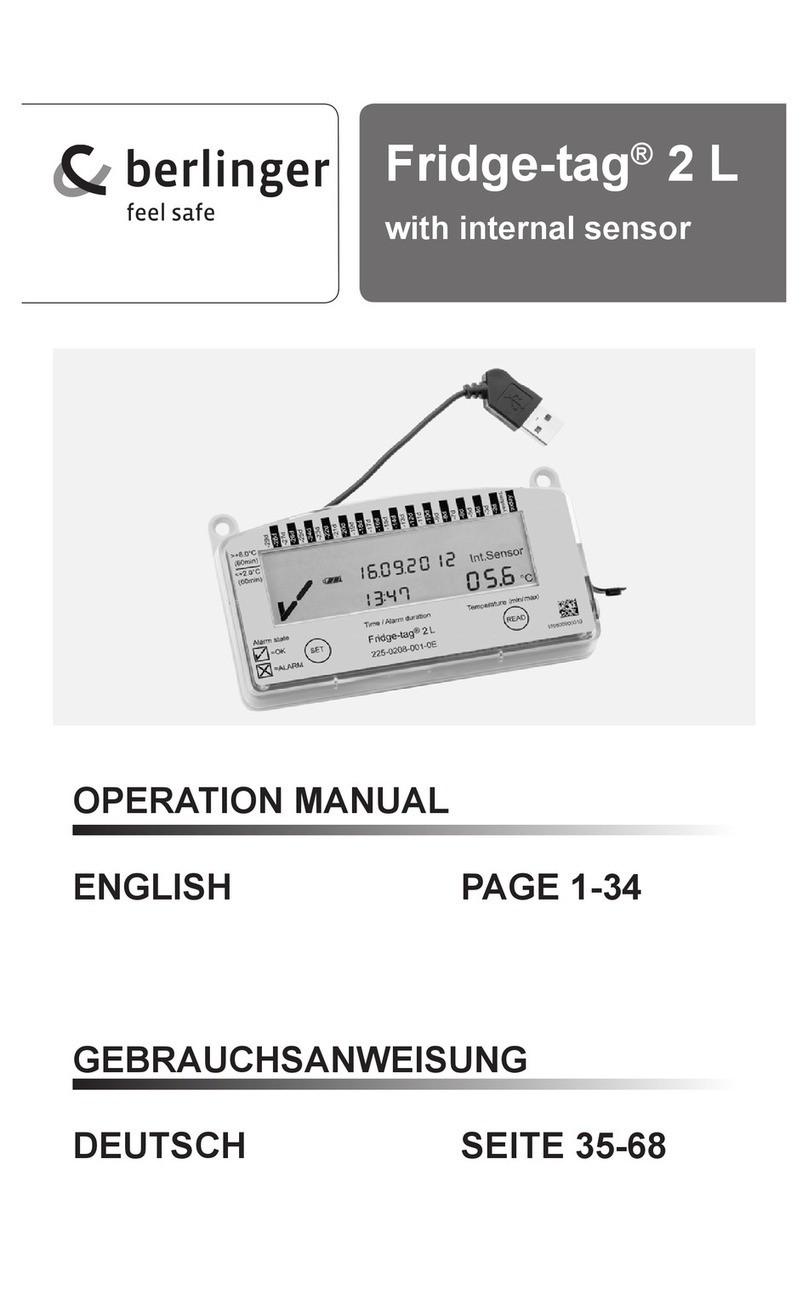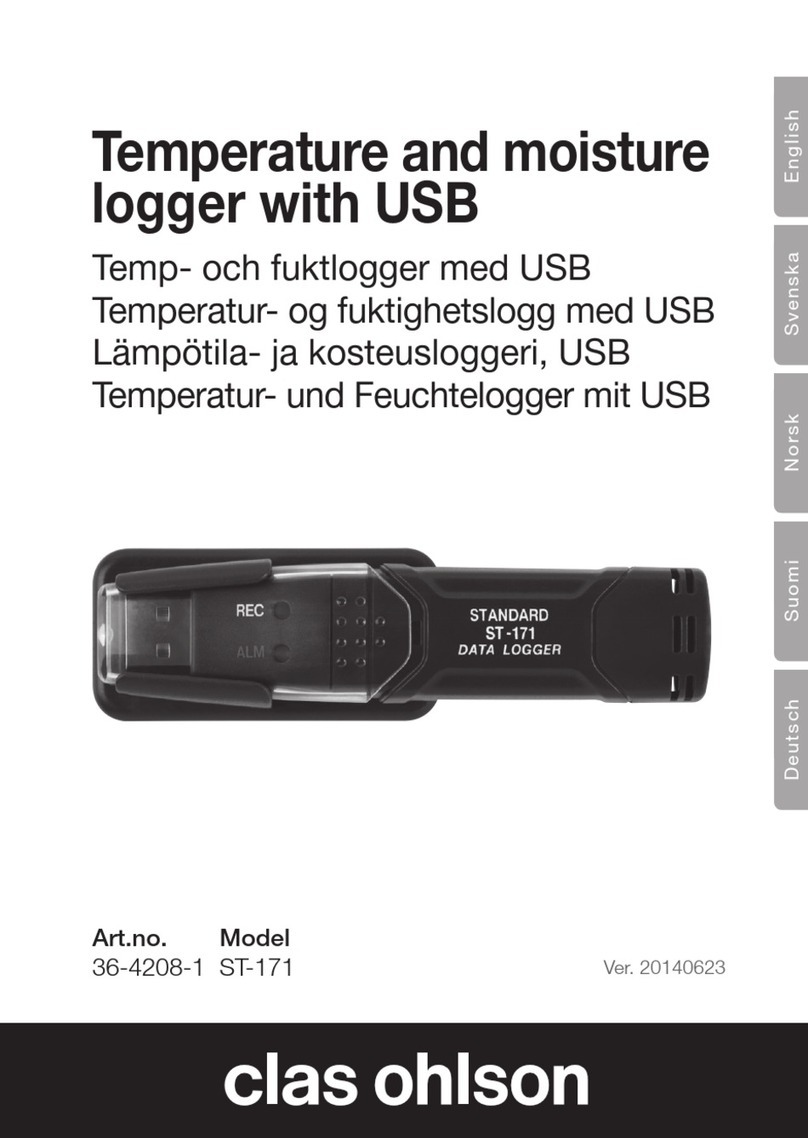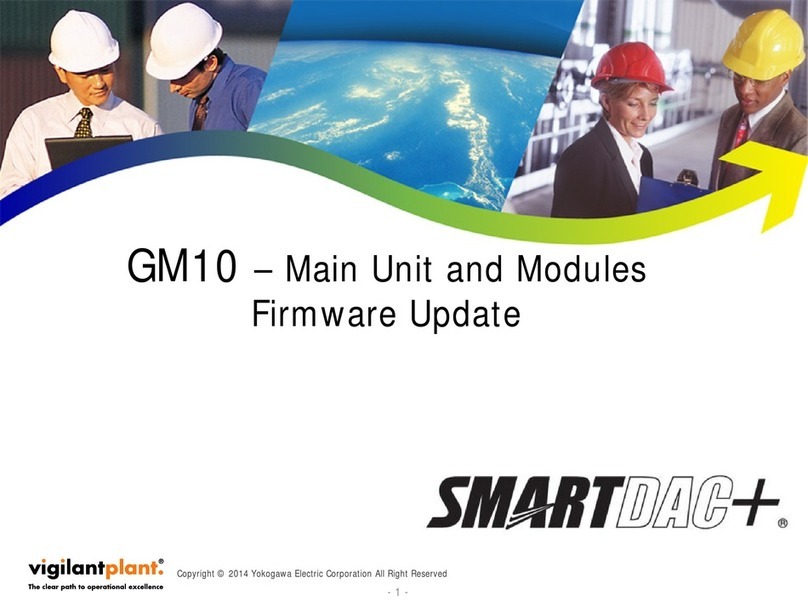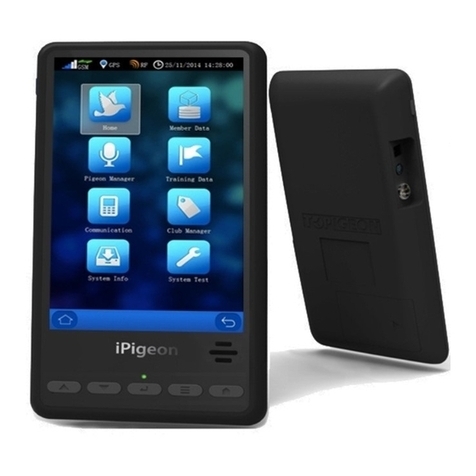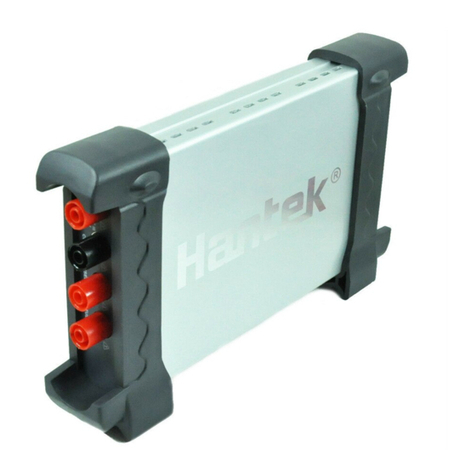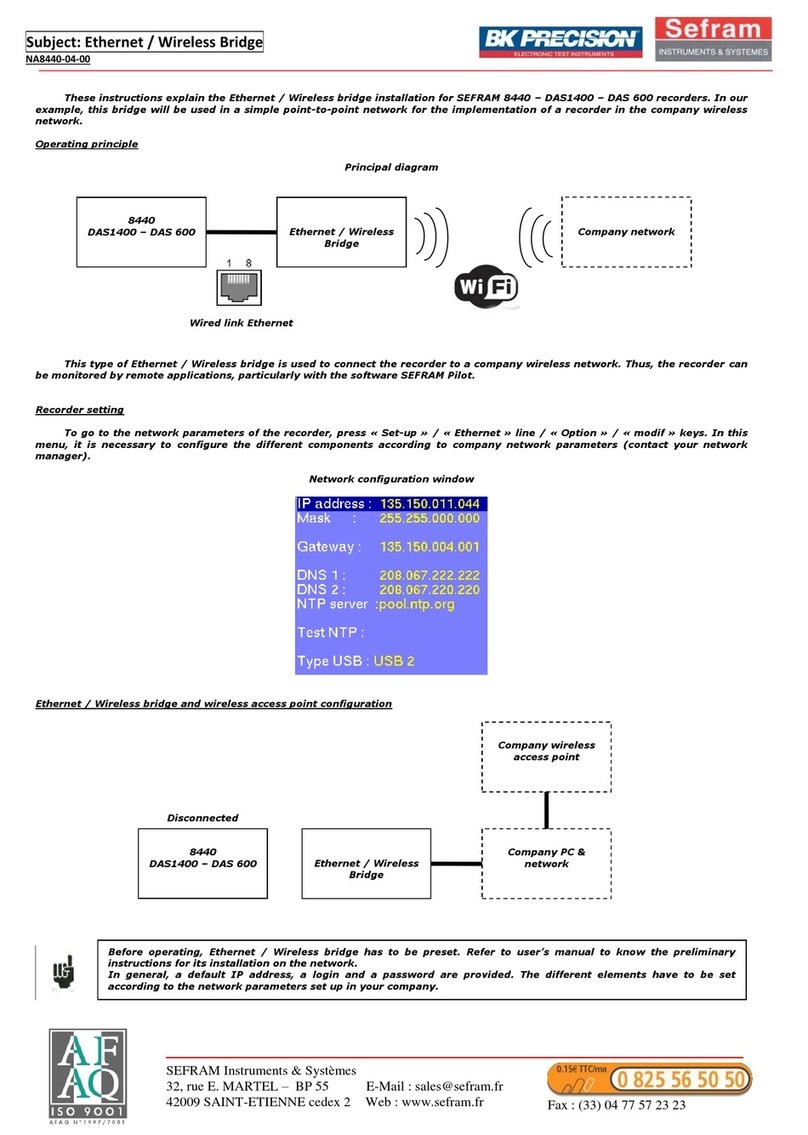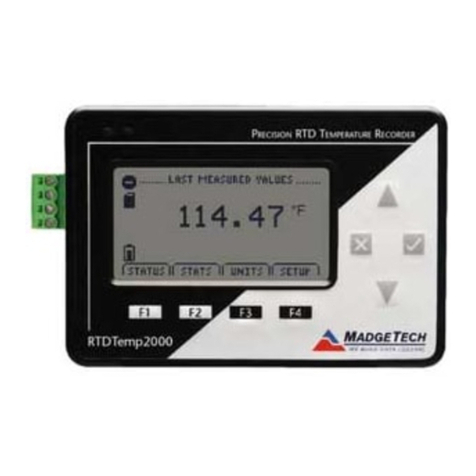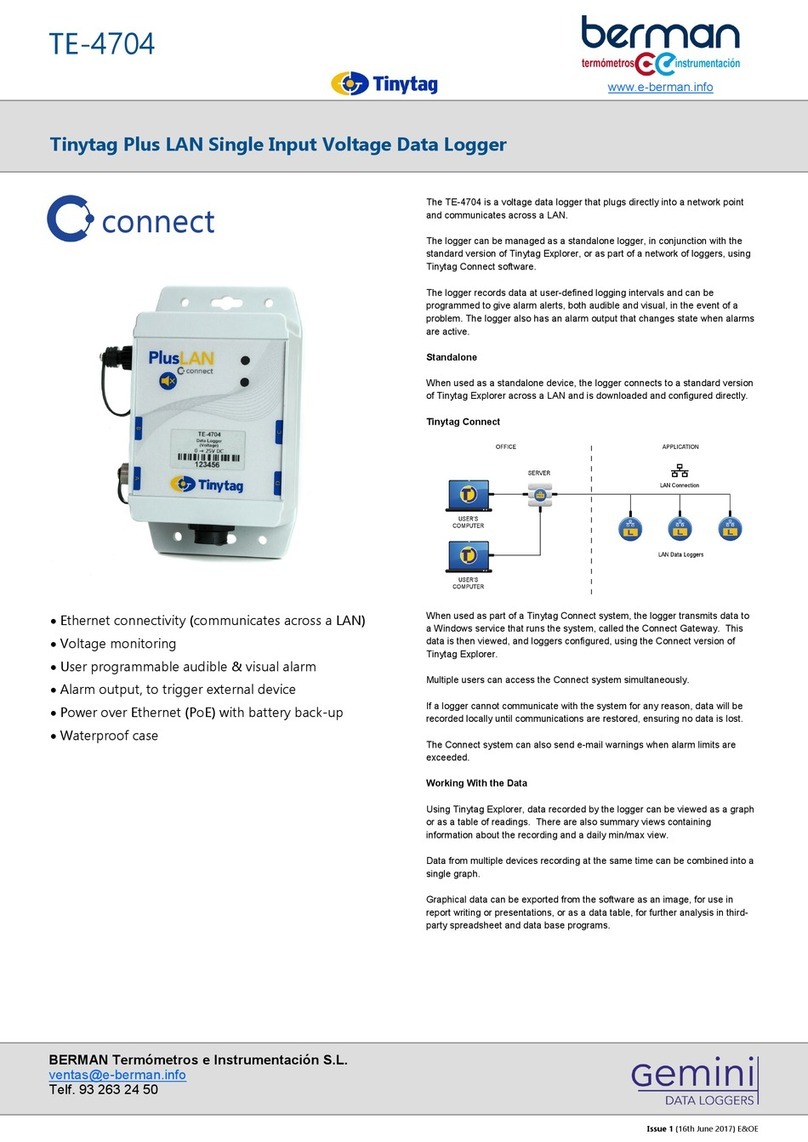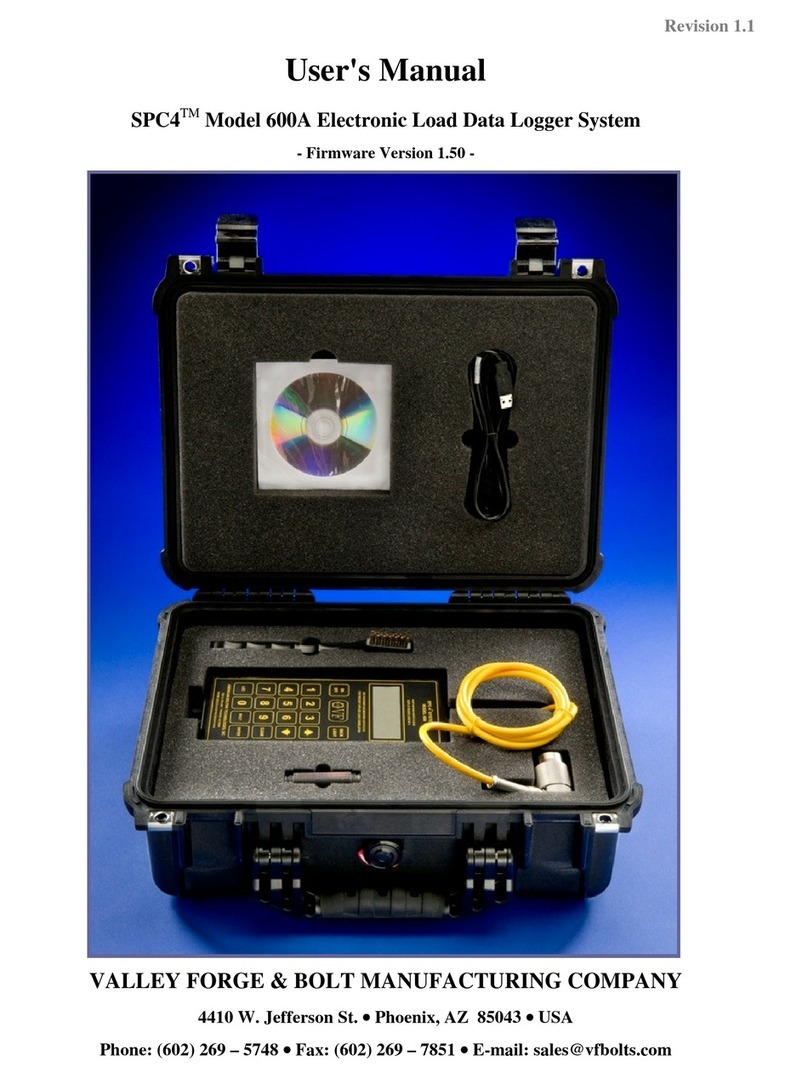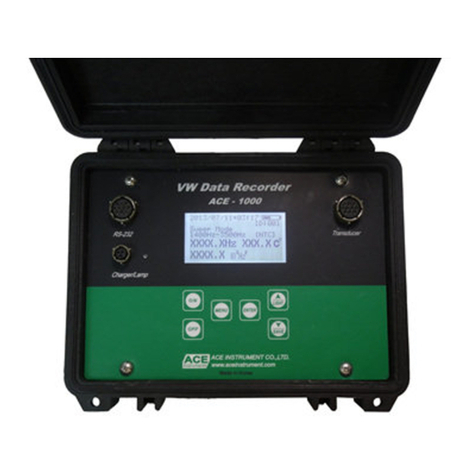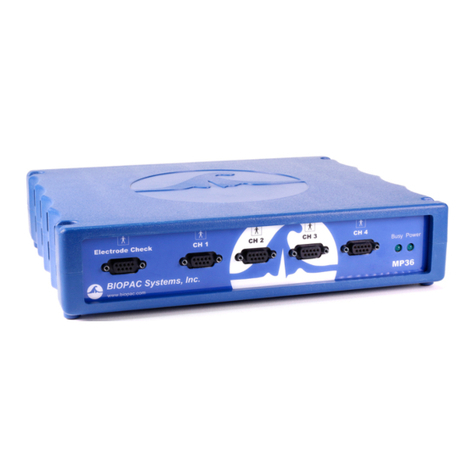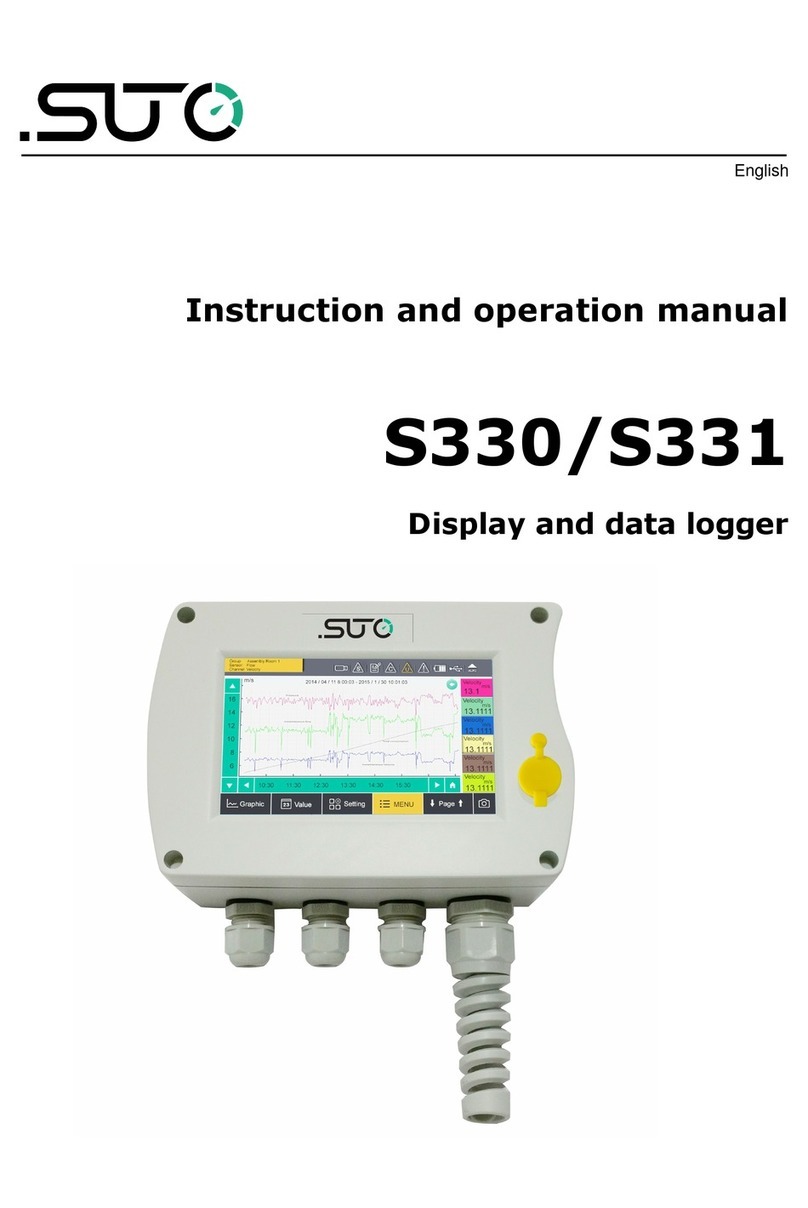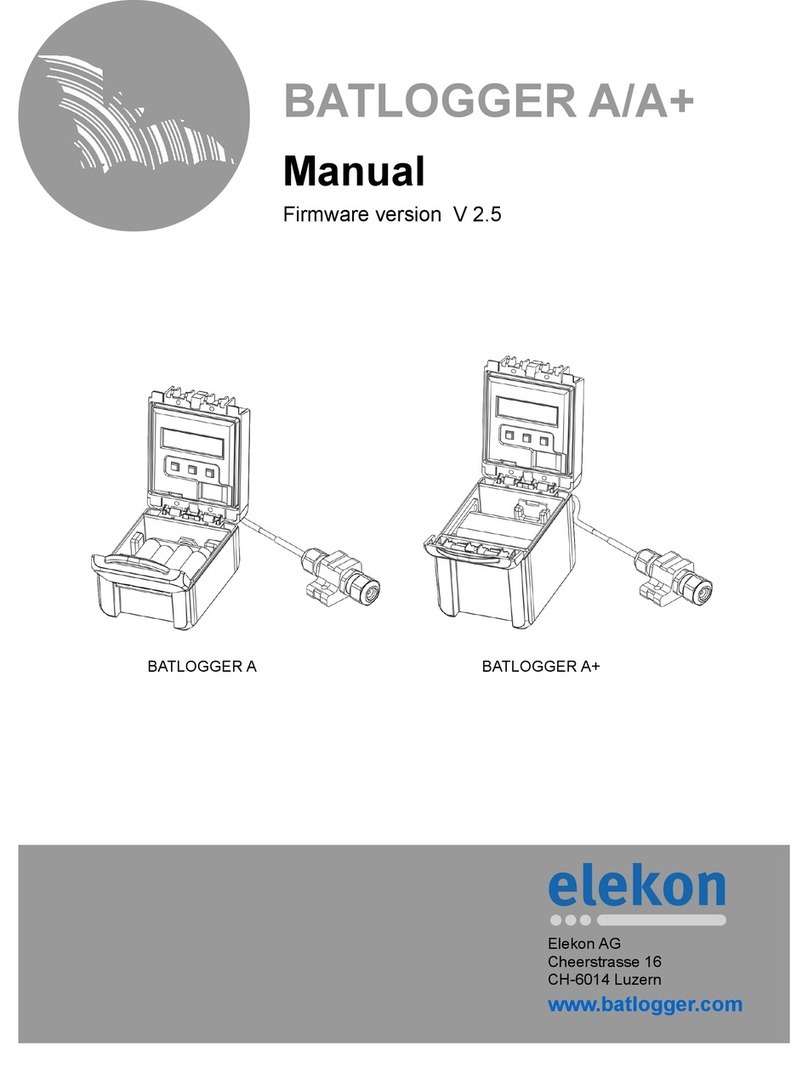crosscontrol CrossFire IX Owner's manual

Revision: 1.18
CrossFire IX –Freely Programmable - Data Logger Edition -
Programming Manual
2018-12-21
www.crosscontrol.com
CrossFire IX
Freely Programmable - Data Logger Edition -
Programming Manual

Revision: 1.18
CrossFire IX –Freely Programmable - Data Logger Edition -
Programming Manual
2018-12-21
2
Contents
1. Introduction ..................................................................................................................................4
2. Validity ..........................................................................................................................................4
3. Security..........................................................................................................................................4
4. Folder structure.............................................................................................................................4
5. Architectural Overview ...............................................................................................................4
6. Development environment.........................................................................................................5
7. Debugging ....................................................................................................................................6
8. Boot Loader...................................................................................................................................7
9. Libraries .........................................................................................................................................7
10.CrossFire IX Data Logger API ......................................................................................................7
11.Interrupts .......................................................................................................................................7
12.Hardware resources ....................................................................................................................8
13.Testing............................................................................................................................................8
14.Tools ...............................................................................................................................................8
14.1. Upgrading the firmware of the CrossFire IX over Wi-Fi ............................................... 8
15.Functionality of the Data Logger Edition .................................................................................10
15.1. Real Time Clock ............................................................................................................... 10
15.2. External FLASH Memory .................................................................................................. 11
15.3. The Wi-Fi module.............................................................................................................. 12
16.Examples.....................................................................................................................................13
16.1. The CANWifiGateway example ................................................................................... 13
16.2. The ThingSpeak example............................................................................................... 15
16.3. The CAN logger example .............................................................................................. 16
16.4. The FOTA (Firmware Over The Air) example............................................................... 17
17.References ..................................................................................................................................17
18.Trademark, etc. ..........................................................................................................................19

Revision: 1.18
CrossFire IX –Freely Programmable - Data Logger Edition -
Programming Manual
2018-12-21
3
Revision history
1.0
First release
CMM
2018-06-18
1.1
Various updates
CMM
2018-09-10
1.2
Updates regarding examples
CMM
2018-09-18
1.3
Updates regarding development environment
CMM
2018-09-26
1.4
Added FOTA example. Improved document structure.
CMM
2018-10-19
1.5
Additional security info
CMM
2018-10-26
1.6
Added info about the examples
CMM
2018-11-07
1.7
Minor changes regarding the Wi-Fi module
CMM
2018-11-09
1.8
Updated examples chapter
CMM
2018-11-20
1.9
Name change to Programming Manual
CMM
2018-11-21
1.10
Corrections and clarifications
CMM
2018-11-27
1.11
Added info about firmware upgrade
CMM
2018-11-29
1.12
Updates for release 0.9 of SDK. Minor corrections.
CMM
2018-11-30
1.13
Review
CMM
2018-12-03
1.14
Added summary for data logger API
CMM
2018-12-07
1.15
Review
CMM
2018-12-10
1.16
Review
CMM
2018-12-11
1.17
Review
CMM
2018-12-12
1.18
Moved tool information to main manual
CMM
2018-12-21

Revision: 1.18
CrossFire IX –Freely Programmable - Data Logger Edition -
Programming Manual
2018-12-21
4
1. Introduction
This document describes the differences between the CrossFire IX CANopen version and the
CrossFire IX Data Logger Edition.
The CrossFire IX Data Logger Edition contains the following additional functionality compared to
the CANopen version:
4/8 MB (depending on version) of external SPI FLASH memory.
Real Time Clock (RTC) with battery backup.
Wi-Fi module (ESP-WROOM-02) connected to the IX main processor through an UART.
2. Validity
This manual is valid for version 1.1 of the CrossFire IX Freely Programmable SDK.
3. Security
It is absolutely necessary to take the security implications of a Wi-Fi connection seriously.
The Wi-Fi chip should normally not be active during machine operation. Instead, it is
recommended to only activate the Wi-Fi chip during machine commissioning and service or when
the machine is used during special supervision. Especially if the firmware written allows messages
coming over Wi-Fi to control outputs or to send CAN messages. However, note that even if outputs
or CAN is not controlled over Wi-Fi, you must also consider the risk of flooding the STM32 with
serial data or bugs that can cause the STM32 to act in an undesired way because of data sent over
the serial link from the Wi-Fi chip.
If connecting the CrossFire IX to the Internet, make sure to have an appropriate firewall between
the CrossFire IX and the Internet.
Make sure to change the standard password used for connecting to the CrossFire IX. All units
should have a unique password.
4. Folder structure
There are some folders specific for the Data Logger Edition (DLE).
Delivery/BootLoader DLE –Bootloader for the DLE version
Src/ESP8266 –Example code for the ESP8266 Wi-Fi processor
Src/DataLoggerAPI –Source code for the data logger API
Tools/CrossFireIXWIFITool –Service Tool using Wi-Fi
5. Architectural Overview
The CrossFire IX Data Logger Edition contains a Wi-Fi slave processor not available in the
CANopen version.

Revision: 1.18
CrossFire IX –Freely Programmable - Data Logger Edition -
Programming Manual
2018-12-21
5
6. Development environment
Development environment for the main processor is the same as for the CANopen version (Atollic
TrueSTUDIO for STM32 or IAR Embedded Workbench).
For programming the Wi-Fi slave processor several development environments are available. The
development environment recommended by CrossControl is the Arduino IDE. The Arduino IDE
can be downloaded from https://www.arduino.cc/en/Main/Software.
To make it possible to develop for the ESP8266 using Arduino IDE, also the Arduino core for
ESP8266 must be installed. The homepage for the Arduino core for ESP8266 is
https://github.com/esp8266/Arduino.

Revision: 1.18
CrossFire IX –Freely Programmable - Data Logger Edition -
Programming Manual
2018-12-21
6
To make the Arduino IDE find the Arduino core for ESP8266, the URL for the Arduino core for
ESP8266 (http://arduino.esp8266.com/stable/package_esp8266com_index.json) must be added
to the Additional Board Manager URL:s.
The version of the Arduino core for ESP8266 can be checked in the Boards Manager.
In the menu under Tools/Board, make sure to select the NodeMCU 0.9 (this is not exactly right but
close enough).
To create a binary for CrossFire IX select Sketch/Export compiled binary. The binary can then be
downloaded to CrossFire IX using the CrossFire IX Tool.
7. Debugging
For writing code running for the Wi-Fi slave processor, a separate Wi-Fi module (NodeMCU or
similar) can be used during development. This module contains an ESP8266 (same circuit as in
CrossFire IX) and a serial to USB converter. This can be handy as with a NodeMCU, code can be

Revision: 1.18
CrossFire IX –Freely Programmable - Data Logger Edition -
Programming Manual
2018-12-21
7
downloaded directly from the Arduino IDE to the Wi-Fi module. This is not possible with the Wi-Fi
module built into the CrossFire IX as there is no direct serial connection to the outside world.
Two tools that can be very handy for debugging network traffic are Packet Sender and Wire Shark.
Packet Sender is a basic, easy to use tool which can log and send network traffic. Wire Shark is a
very capable tool but is more difficult to learn.
8. Boot Loader
The CrossFire IX Data Logger Edition has a special version of the CrossFire IX bootloader
supporting update of the Wi-Fi slave processor. The bootloader is available in binary form in the
Delivery\BootLoader DLE folder.
There is also a special version of the CrossFire IX Tool supporting upgrade of the Wi-Fi processor.
The tool is available in the Tools\CrossFire IX Tool DLE folder.
9. Libraries
To make it possible to use the data logger functions, the data logger API files must be included in
the project. It is also important that the define LOGGER_EDITION is set. This will activate
appropriate functions in the drivers layer. This has already been done in the example projects.
There are also some drivers specific for the data logger edition:
usart.c
10. CrossFire IX Data Logger API
The Data logger API contains the following modules
Module
Header File
Wi-Fi
wifi.h
RTC
rtc.h
FLASH
flash.h
For details about the Data Logger API, see the Doxygen documentation in CrossFire IX-CANopen-
FreelyProgrammable\DoxyGen\DataLoggerAPI.
11. Interrupts
For the data logger edition also the following interrupts are used:
Interrupt
Description
Priority (priority/sub priority).
Lower number means higher
priority.
SPI1
External FLASH when not using DMA
mode
1/0

Revision: 1.18
CrossFire IX –Freely Programmable - Data Logger Edition -
Programming Manual
2018-12-21
8
USART3
Serial communication with Wi-Fi
module
0/0
DMA1 CH 2
DMA1 CH 3
When using the External FLASH driver
in DMA mode
2/0
CAN
0/0
12. Hardware resources
The following additional hardware resources are used in the data logger edition compared to the
CANopen version:
Resource
Used for
I2C1
RTC
USART3
Wi-Fi module
SPI1
External FLASH
DMA1 CH 2
DMA1 CH 3
DMA for External FLASH
13. Testing
There are a number of additional test functions included in the freely programmable SDK for the
Data Logger Edition. By setting the define UNITTEST the function PerformUnitTest will be
executed after system init. In this function a number of test functions are called. The test functions
will use printf to give user feedback so it is important that printf calls are redirected to a console
window to see the output. It is possible to comment out the test functions that you do not want to
run.
The available test functions are:
Name
Description
EXTFLASH_ReadWriteTest
Test read/write to the complete SPI FLASH
EXTFLASH_SpeedTest
Test read/write performance of the SPI FLASH
EXTRTC_Test
Test the RTC
14. Tools
14.1. Upgrading the firmware of the CrossFire IX over Wi-Fi
Note that this is only possible if the firmware on the CrossFire IX supports FOTA updates!
First it is necessary to build a firmware package (an .fwp file). This is done with the CrossFire IX
Tool.
Go to the FOTA tab.

Revision: 1.18
CrossFire IX –Freely Programmable - Data Logger Edition -
Programming Manual
2018-12-21
9
Browse for the binary files to include in the package with the respective … button. The
firmware package can contain any combination of firmware for the main processor
(Application), boot loader for the main processor (Bootloader) and firmware for the
ESP8266 Wi-Fi processor (NodeMCU). For the Wi-Fi processor file you need to supply
your own version number. For the other binaries, the version number is read from the
binary file itself.
When all files are selected, press the generate button. Decide where to store the .fwp file
using the file dialog.
The LUA files are not needed if you are not using the NodeMCU/LUA firmware on the
ESP8266 which is not recommended!
The actual upgrade is done with the CrossFire IX Wi-fi Tool. The CrossFire IX Wi-fi Tool has no
support for CAN as the CrossFire IX Tool but only for Wi-Fi.

Revision: 1.18
CrossFire IX –Freely Programmable - Data Logger Edition -
Programming Manual
2018-12-21
10
Make sure your PC is connected to the access point that the CrossFire IX sets up.
Enter the IP address and port of the CrossFire IX in the tool.
Click “Connect”. If this fails, make sure you are really connected to the CrossFire IX Wi-Fi
access point, check that the CrossFire IX is in upgrade mode (you might need to set digital
input 1 to VBAT) and check that the firmware currently running on the IX supports Wi-Fi
upgrade.
Click “Get Info” to get some information from the CrossFire IX about the current firmware
version and MAC address. This step is optional.
Erase the SPI FLASH used by FOTA (the first 1.5MB) by clicking “Erase FLASH”. This will
erase any information that is stored there already.
Browse for the .fwp file by pressing the “…” button.
Click “Download File” and wait for the file to be downloaded to the CrossFire IX.
Click “Reboot and Program”. Until now, no upgrade has actually been performed. The
upgrade file has only been written to SPI FLASH.
The CrossFire IX will indicate that upgrade is in progress by a fast blink of the LED.
15. Functionality of the Data Logger Edition
The Data Logger Edition contains the following additional functionality compared to the CANopen
version:
15.1. Real Time Clock
The Real Time Clock is used to keep track of the “real time”. As the RTC contains a backup battery,
the time will continue also when the CrossFire IX has no power. The time can be used for instance

Revision: 1.18
CrossFire IX –Freely Programmable - Data Logger Edition -
Programming Manual
2018-12-21
11
together with the external FLASH memory to be able to log certain things with a “real time”
timestamp.
Reading and writing to the RTC is relatively slow as it is connected through the I2C bus. It is
recommended to read the RTC at start up and set the processor clock accordingly and use the
processor clock from then on.
The functions for the RTC are:
unsigned char
EXTRTC_SetTime(timeStruct
*time);
Set RTC Time
unsigned char
EXTRTC_GetTime(timeStruct
*time);
Get the current time. This is a slow operation so generally it is
better to read this once at start up and set processor clock
accordingly.
15.2. External FLASH Memory
The external FLASH memory is a 4/8MB flash memory connected to the main processor using SPI.
The FLASH memory can be used for logging or for storage of large amounts of data that does not fit
within then main processor FLASH memory.
The FLASH memory is divided into 4KB sectors and 64KB blocks. Erase must be performed in
sector or block sizes. It is faster to erase a complete block at once than erasing a block sector by
sector. It is also possible to erase the complete FLASH at once. Please note that writing to and
erasing the external FLASH memory is a relatively slow operation. Writing to the FLASH memory
requires the memory to be erased first. There is a limited number of erase/write operations the can
be done to the FLASH memory. For writing small amounts of data that changes often, consider
using the FRAM memory instead.
The Read/Write/Erase speed that can be expected from the FLASH memory can be seen in the
table below. Please note that these values are only indicative and can vary. These values are real
values measured on the CrossFire IX. Values within parenthesis are from FLASH memory
reference manual.
Operation
Speed
Size
Sector Erase
68 KB/s (58 KB/s)
4096 bytes
Block Erase
158 KB/s (146 KB/s)
65536 bytes
Read
1074 KB/s (6.5 MB/s)
256 bytes
Write
286 KB/s (365 KB/s)
256 bytes
Although possible to implement, there is no file system for the external FLASH memory delivered
by CrossControl.
Please read the data sheet for the FLASH memory for additional details.
The most common functions for the external FLASH are the following
unsigned char
EXTFLASH_SectorErase(unsigned long
address, BOOL async)
Erase a FLASH sector (4096 bytes). Erase speed is about
68Kb/s. This will take about 60ms.
unsigned char
EXTFLASH_BlockErase(unsigned long
Erase a FLASH block (65536 bytes). Erase speed is about

Revision: 1.18
CrossFire IX –Freely Programmable - Data Logger Edition -
Programming Manual
2018-12-21
12
address, BOOL async);
158Kb/s. This will take about 400ms.
unsigned char
EXTFLASH_ChipErase(BOOL async);
Erase the whole FLASH chip
unsigned char
EXTFLASH_Write(unsigned long
address, unsigned char *data, int
len, BOOL async);
Write to the FLASH memory. Note that the FLASH block
must be erased before write.
unsigned char
EXTFLASH_Read(unsigned long
address, unsigned char *buffer, int
len);
Read from the FLASH memory
BOOL EXTFLASH_ReadID(unsigned char
*manufactId, unsigned char
*deviceId);
Read the device and manufacturer ID from the External
FLASH. Should be manufacturer = 1 and deviceId = 15 for
standard SPI FLASH in CrossFire IX.
15.3. The Wi-Fi module
CrossFire IX data logger edition contains a Wi-Fi module (ESP-WROOM-02) connected to the
main processor through an UART. The Wi-Fi module contains a microcontroller with full TCP/IP
stack and can handle both TCP and UDP. The module is freely programmable and can do a number
of things, for example:
Send data to an IoT cloud service like ThingSpeak.
Set up a local webserver that can be used for administering or supervising the CrossFire IX.
Fetch data from internal or external web servers, for instance backups of machine
configurations.
Send and receive UDP and TCP data in any form.
It is also possible to use the Wi-Fi module microcontroller as a generic slave processor, not
using the Wi-Fi functionality at all.
The Wi-Fi module can be programmed in several different ways:
Using the Espressif SDK
Using NodeMCU/LUA
Using Arduino core for ESP8266
CrossControl recommends the Arduino core for ESP8266. All CrossControl examples are based on
Arduino core for ESP8266.
The Wi-Fi module is connected to the main processor through an UART. The UART has a
communication speed of max 500kbit/s. This means that a transfer rate of about 40-50KB/s can be
reached between the IX main processor and the slave processor.
The Wi-Fi module can run in either 80 or 160 MHz. It is recommended to use 80 MHz for
maximum stability and lower power consumption.
There are a number of different examples available in the examples chapter. There are also a lot of
generic examples for ESP8266 on the Internet.
The most common functions for the WIFI module are:

Revision: 1.18
CrossFire IX –Freely Programmable - Data Logger Edition -
Programming Manual
2018-12-21
13
void WIFI_Init(WIFISerialBaudrate
baudRate);
Initialize WIFI module
unsigned long
WIFI_SendString(char* data);
Send string to WIFI processor over USART. It is up to the
WIFI processor what to do with the data.
unsigned long WIFI_Send(unsigned
char* data, int len);
Send data to WIFI processor over USART. It is up to the WIFI
processor what to do with the data. This call will not block.
unsigned long
WIFI_SendSync(unsigned char* data,
int len, int timeoutMS);
Send data to WIFI processor over USART. It is up to the WIFI
processor what to do with the data. This call will block until
data is sent or timeout occurs.
void WIFI_Reset(void);
Reset the WIFI circuit
void WIFI_KeepInReset(void);
Reset the WIFI circuit and keep it in reset. Call WIFI_Reset to
start again.
BOOL WIFI_GetMessagePtr(unsigned
char **buf, unsigned long *len,
UsartFlagsEnum* flags);
Get message from WIFI message buffer. Note that the message
is not copied, you get direct access to the usart buffer slot (for
performance reason)
BOOL WIFI_GetMessage(unsigned
char* buf, unsigned long *len,
UsartFlagsEnum* flags);
Get message from WIFI message buffer. The message is copied
to the buffer and should not be freed with
WIFI_FreeLastMessage afterwards.
void WIFI_FreeLastMessage(void);
Free the last message in the message queue. Must be called
after you have processed data returned by
WIFI_GetMessagePtr.
16. Examples
The CrossFire IX freely programmable Data Logger Edition is delivered with several examples. The
examples are made in Atollic TrueSTUDIO IDE/Arduino IDE but can be converted to IAR
Embedded Workbench if desired. The examples are divided in two parts. One part is running on
the IX main processor and one part is running on the Wi-Fi slave processor.
Note that all examples need additional testing and error management to be used as products.
16.1. The CANWifiGateway example
The CANWIFIGateway example shows how to read CAN messages from the CAN bus and send
them over Wi-Fi and vice versa. Data is sent with UDP for best performance. Data can be sent to a
PC running CrossFire IX Wi-Fi Tool, another CrossFire IX or any other unit supporting UDP. If
connecting two IXs together, one IX must not set up an access point but connect to the other IX, or
both IXs must connect to the same router.
To run the example, make sure to compile and install the corresponding software on the Wi-Fi
module.
When starting the application the CrossFire IX will set up an access point. Use password
“password001” to connect. The CrossFire IX will use IP address 192.168.4.1 and will give the first
connected unit IP address 192.168.4.2

Revision: 1.18
CrossFire IX –Freely Programmable - Data Logger Edition -
Programming Manual
2018-12-21
14
The CAN bus is run in 250 kbit/s. Messages are sent in bursts over UDP to increase performance.
This might introduce a slight delay. In good conditions the module will handle full busload at 250
kbit/s over Wi-Fi but there is no guarantee to be able to handle that in all situations.
If you would like to send data to the CrossFire IX Wi-Fi Tool, start the tool and click “Start
Monitoring”. If no data is received, make sure that you have supplied your PCs IP address when
building the ESP8266 firmware and that there is no firewall or missing administrative rights is
stopping the UDP traffic.
Data can also be sent in the other direction by entering CAN id and data and clicking the “Send”
button. Make sure that IP address and port is correct.
To perform a firmware upgrade over CAN, digital in 1 must be connected to VBAT at start up. This
will active 1000 kbit/s CAN bit rate and the unit will accept firmware upgrade instructions instead
of sending CAN data over Wi-Fi.
There are also some defines in the ESP8266 code that can be used to test TCP and TCPSERVER
mode.
UDP will send and receive data over UDP.
TCP will send and receive data over TCP. However, TCP needs another unit in TCPSERVER
mode to connect to. It can also connect to another TCP server, for instance "Packet Sender" or a
similar tool running on a PC.
TCPSERVER means that this unit will set up a TCPSERVER which a TCP client can connect to
(for instance another CrossFire IX). In this mode the unit will only calculate the number of
received messages.
The actual CAN gateway functionality is implemented in a single file: CANGateway.c. For
performance reasons, the USE_OUTPUTS and USE_PWMI defines are not set which means that
output I/O is not available.

Revision: 1.18
CrossFire IX –Freely Programmable - Data Logger Edition -
Programming Manual
2018-12-21
15
As with all wireless communication, there is no guarantee that all CAN messages will be delivered
when using Wi-Fi. The system must be designed with this in mind. Also make sure to change the
default password by modifying the ESP8266 code.
16.2. The ThingSpeak example
ThingSpeak is an IoT portal available for both commercial and non-commercial use. ThingSpeak is
integrated with MATLAB making it possible to perform advanced data analysis.
The ThingSpeak example shows how to send data to the ThingSpeak IoT server. The example sets
up analog in1 and in2 to 0-32V and sends the measure values in mV to the ThingSpeak server every
30s. It is also possible to use the ThingSpeak TalkBack app to send data to the unit to control an
output. There are two talkback commands supported “TURN_ON” and “TURN_OFF”.
To test the example you can register a free account on the ThingSpeak web site
https://thingspeak.com/. You need to create your own channel and update the ESP8266 example

Revision: 1.18
CrossFire IX –Freely Programmable - Data Logger Edition -
Programming Manual
2018-12-21
16
with the channel id and API Keys of your channel. You must also modify the ESP8266 example to
connect to a Wi-Fi router that has Internet connection.
For commercial use a ThingSpeak commercial license is needed.
The ThingSpeak example is implemented in the file thingspeak.c.
For more advanced solutions there is also an official ThingSpeak library on
https://github.com/mathworks/thingspeak-arduino. There are also libraries for MQTT
transmission available.
16.3. The CAN logger example
This example logs all received CAN messages in the external SPI FLASH memory. It supports both
standard and extended CAN frames. It shows how to read and write to the external FLASH memory
as well as using CAN and RTC. It also shows how to set up a webserver and send large files.
The CAN bus will run at 250 kbit/s. The logger is using a large RX buffer of 1024 messages and will
be able to handle bursts at full bus load. During long time it is not recommended to go above 50%
busload, otherwise messages might be lost. Lost messages will be indicated on the diode. The single
operation that takes the most time is the FLASH erase operation. To erase the complete FLASH
and not allowing wrap around would increase the performance dramatically.
A CAN message will be stored as 24 bytes in the FLASH memory independent on the length of the
message. This makes it easy to find a specific message in the memory but takes more FLASH
memory for small messages. Besides from the actual message data and id, also a 32-bit counter, a
32-bit millisecond timer and a checksum is stored for each message.
The FLASH memory has an endurance of 100000 erase/write cycles. As it takes about 1.5 minutes
to fill the memory at full busload at 250kbit/s (4MB memory), the memory will last for 100000*1.5
minutes = 2500h or 104 days if written continuously at full load.
If the memory gets full, it will wrap around and the oldest messages will be erased.
To perform a firmware upgrade over CAN, digital in 1 (port 9) must be connected to VBAT at start
up. This will active 1000 kbit/s CAN bit rate and the unit will accept firmware upgrade instructions
instead of logging CAN.
When starting the application the CrossFire IX will set up an access point with name
CrossFireIX_001. Connect with password “password001”. The CrossFire IX will use IP address
192.168.4.1 and will give the first connected unit IP address 192.168.4.2.
After running a logging session, it is possible to download the log through the Wi-Fi module to a PC
or mobile device. This is done by using a regular web browser and connecting to the CrossFire IX
web server. From the webpage it is possible to clear the log or download the log to the browser in
.csv format. It is also possible to start and stop logging, get info about number of logged messages
and to set up an acceptance filter defining what range of messages to log. It is also possible to adjust
the RTC clock.
The CAN logger example is implemented in canlogger.c.
For limitations in the CAN logger example, please read the header of the canlogger.c file.

Revision: 1.18
CrossFire IX –Freely Programmable - Data Logger Edition -
Programming Manual
2018-12-21
17
16.4. The FOTA (Firmware Over The Air) example
The FOTA example shows how to perform firmware upgrade using Wi-Fi.
For security reasons, the FOTA firmware checks that the digital in 1 is high (port 9), otherwise the
Wi-Fi chip will not be activated.
The example sets up the Wi-Fi module as an access point and sets up a TCP server on the module.
The firmware file received is sent over the USART to the IX main processor and is stored in the
external SPI FLASH memory. After reboot the bootloader will read from the SPI flash memory and
perform the actual firmware upgrade.
FOTA uses the first 1.5MB of SPI FLASH memory to temporarily store the firmware file. If the SPI
FLASH memory is used for other things as well, you must reserve the first 1.5MB if FOTA is going
to be used.
When starting the example the CrossFire IX will set up an access point with name
CrossFireIX_001. Use password “password001” to connect. The CrossFire IX will use IP address
192.168.4.1 and will give the first connected unit IP address 192.168.4.2.
The firmware package (*.fwp) is created with the CrossFire IX DLE Tool. This tool is only available
as a binary.
To download the firmware package, the tool CrossFire IX Wi-Fi Tool is used. It connects to the TCP
server and transfers the firmware package. This tool is supplied with full source code and can be
adapted by the OEM. The tool is written in C#/WPF in Visual Studio 2010.
For performance reasons, the USE_OUTPUTS and USE_PWMI define are NOT set which means
that output I/O is not available.
The FOTA code is implemented in the file fota.c.
17. References
CrossFire IX - Technical manual.docx
CrossFire IX - CANopen Slave Developers Guide.docx

Revision: 1.18
CrossFire IX –Freely Programmable - Data Logger Edition -
Programming Manual
2018-12-21
18
https://support.crosscontrol.com/
https://atollic.com/
https://www.arduino.cc/en/Main/Software
https://www.espressif.com/en/products/hardware/esp-wroom-02/overview
https://thingspeak.com/
https://www.iar.com/
https://www.wireshark.org/
https://packetsender.com/

Revision: 1.18
CrossFire IX –Freely Programmable - Data Logger Edition -
Programming Manual
2018-12-21
19
18. Trademark, etc.
© 2018 CrossControl
All trademarks sighted in this document are the property of their respective owners.
CrossFire is a trademark which is the property of CrossControl AB.
Freescale is a registered trademark of Freescale Semiconductor Inc. ARM is a registered trademark
of ARM Limited. Linux is a registered trademark of Linus Torvalds. Bluetooth is a trademark of
Bluetooth SIG. CANopen is a registered trademark of CAN in Automation (CiA).
CrossControl is not responsible for editing errors, technical errors or for material which has been
omitted in this document. CrossControl is not responsible for unintentional damage or for damage
which occurs as a result of supplying, handling or using of this material including the devices and
software referred to herein. The information in this handbook is supplied without any guarantees
and can change without prior notification.
For CrossControl licensed software, CrossControl grants you a license, to under CrossControl
intellectual property rights, to use, reproduce, distribute, market and sell the software, only as a
part of or integrated within, the devices for which this documentation concerns. Any other usage,
such as, but not limited to, reproduction, distribution, marketing, sales and reverse engineer of this
documentation, licensed software source code or any other affiliated material may not be
performed without written consent of CrossControl.
CrossControl respects the intellectual property of others, and we ask our users to do the same.
Where software based on CrossControl software or products is distributed, the software may only
be distributed in accordance with the terms and conditions provided by the reproduced licensors.
For end-user license agreements (EULAs), copyright notices, conditions, and disclaimers,
regarding certain third-party components used in the device, refer to the copyright notices
documentation.
Other manuals for CrossFire IX
1
Table of contents
